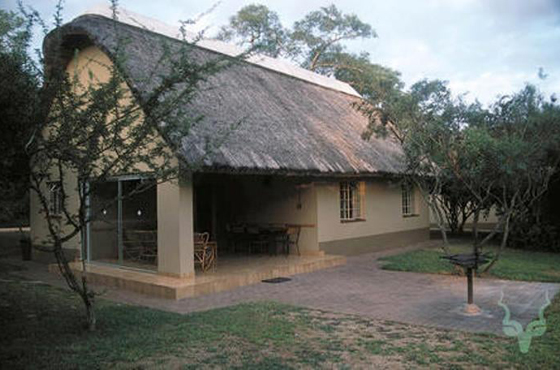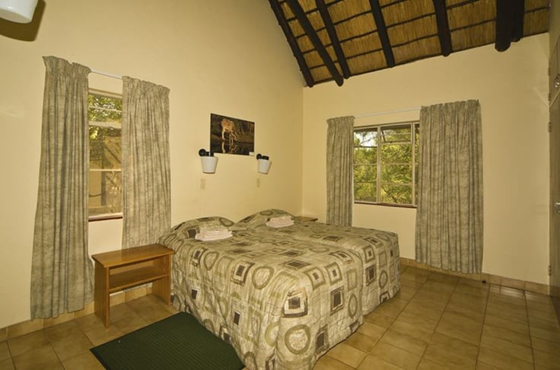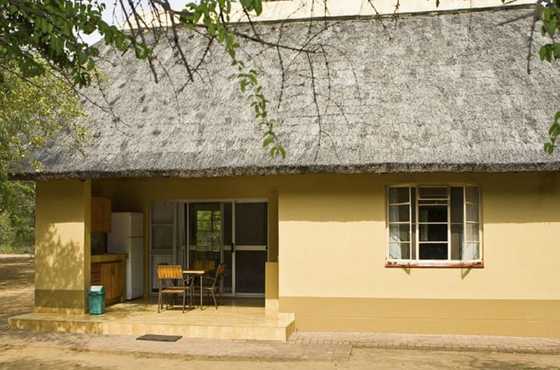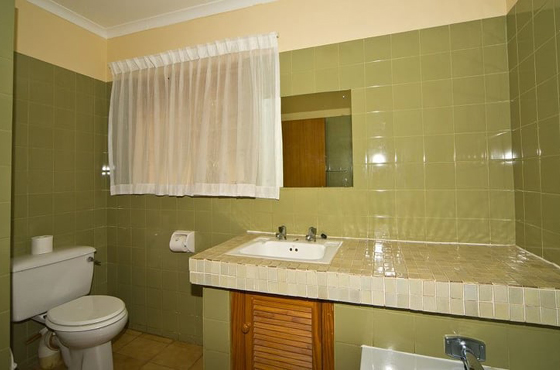
Whatsapp Us

Whatsapp Us

Hidden by massive Wild Fig and Jackalberry trees, the Biyamiti Bushveld Camp is located on the banks of the Mbiyamiti River. As one of the most beautiful bushveld camps in the park, this secluded camp has only 15 cottages, making it a popular and intimate destination for nature lovers. Because Biyamiti is a small and relatively quiet camp, it often happens that wild animals move straight through the camp.
Rates are per night and exclude 1% community fund which will be added when booking.
| Accommodation Type | Base Guests | Base Rate | Additional Adults |
|---|---|---|---|
| Cottage (NCO2+2) | 2 | R 2,219 | R 641 |
| Cottage (NCO2+2V) | 2 | R 2,515 | R 641 |
| Guest Cottage (NGC5) | 4 | R 4,053 | R 641 |
| Guest Cottage (NGC5V) | 4 | R 4,473 | R 641 |
Spread out along the Mbiyamiti River are 15 family cottages, equipped for self-catering accommodation. Bedding, towels and soap is provided. A maximum of 70 guests can be accommodated at this camp.
There is one bathroom with a bath, shower, toilet and basin. The kitchen is equipped with a fridge, 2-plate stove and the cutlery, crockery and utensils needed for food preparation. Barbecue facilities are provided and the covered veranda serves as the dining room and lounge.

These 2-bedroom units are furnished with 2 single beds in the main room and 3 single beds in the second bedroom. Two bathrooms are available, with a shower or a bath as well as a toilet and basin in each bathroom. A covered patio with outdoor furniture as well as barbecue facilities is available.


To ensure exclusivity for guests staying at Biyamiti, day visitors are not allowed in the camp. Biyamiti is located 39 km from the Malelane Gate, the nearest entrance gate. The shop at the camp supplies only the bare minimum like firewood and ice, so guests are encouraged to acquire supplies either in Malelane before entering the park or at Berg-en-Dal or Skukuza, where the shops are better stocked.
Take note that there are no restaurant facilities available in Biyamite Bushveld Camp. Guests can enjoy meals at the restaurants at Berg-en-Dal, Skukuza or Lower Sabie. The Afsaal Picnic site also has a shop selling light meals and refreshments.
The vegetation around Biyamiti Camp is fairly dense with tall trees on the banks of the river. A wide variety of wild animals can be seen in this area, including hippos and wild dogs and even cheetahs and leopards.
Guided bush walks as well as game drives are offered and night drives give guests the opportunity to see nocturnal animals in their natural environment.
Most of the rest camps in Kruger offer guests the opportunity to take part in daily early morning and afternoon guided walks. Professional, experienced and armed field guides take groups of up to eight persons out of the camp’s boundaries to explore the surrounding wilderness areas on foot.
Ensuring the safety of the guests, these guides share their knowledge of the fauna and flora and to explain natural wonders, enriching their knowledge of the African bush and wildlife.
The walks are informative and relaxed and don’t take longer than a few hours, focussing on the things not easily seen from a vehicle. Being out on foot, an area is covered more intensely and guests are able to experience nature using all their senses. Large game in the area offers the possibility of encounters and the exhilarating experience of approaching them on foot.
Kruger’s game drives are for guests who want to get closer to the wild side of nature and experience the Park’s animals up close. Game Drives are offered at most of the rest camps and information is available and reservations can be made at reception at the camp.
Guests are transported in open vehicles and an experienced guide interprets the natural bush and offers insight into the ways of the Kruger Park. The duration of the Game Drives are approximately 3 hours.
There are 336 tree species in the park of which 17 are protected trees.
With an estimated 1500 lions, 17 000 elephants, 48 000 buffalo, 1 000 leopards and just over 2 000 rhinos inhabiting the Kruger National Park, sighting the “Big Five” is very possible when doing game drives. Even though it should not be a prerequisite on a safari and sightings of specific animals absolutely happen on the luck of the draw, these animals are a huge attraction to visitors.
Kruger is one of the premier game-watching destinations in the world. Approximately 147 mammal species occur in the park. It is possible to see all the classical African big game, including elephant, black and white rhino, hippopotamus, giraffe, zebra, buffalo, warthog and many antelope species. Large carnivores include lion, leopard, cheetah, wild dog and spotted hyena. There are also many smaller mammals which are equally enticing.
Something else that became an attraction to wildlife viewing, is a group of insects known as the “Small Five”. This group includes the Elephant Shrew, Ant Lion, Rhinoceros Beetle, Buffalo Weaver and Leopard Tortoise. Kruger National Park also supports packs of the endangered African wild dog, of which there are thought to be only about 400 left in the whole of South Africa.
More than 500 different bird species have a home in Kruger National Park, some of them not to be found anywhere else in South Africa. Numerous water points make for excellent birdwatching, while there are eleven bird/game-viewing hides in some of the camps and picnic sites in the park.
The Kruger Park is inhabited by 114 species of reptiles, including black mambas, African rock pythons, and 3,000 Nile crocodiles 34 species of amphibians are found in the park, as well as 49 fish species. A Zambezi shark, Carcharhinus leucas, also known as the bull shark, was caught at the confluence of the Limpopo and Luvuvhu Rivers in July 1950. Zambezi sharks tolerate fresh water and can travel far up rivers like the Limpopo.
219 species of butterfly and skipper are native to the park. The fastest and most robust of these belong to the genus Charaxes, of which 12 species have been recorded. Genera Papilio and Acraea are also well-represented, with about 10 and 15 species respectively. The total number of Lepidoptera species in the park is unknown but could be in the order of 7,000, many of which range widely in African savanna.